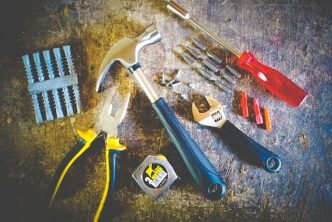If you’re the owner of a van, then you know that it’s important to keep it running smoothly. A van that isn’t running well can be a huge hassle — not to mention an expensive problem.
So in this blog post, we will discuss seven ways that you can keep your van running like new and stay safe on the road. Many of these tips are simple and easy to follow, so don’t hesitate to try them out if you’re a beginner or a veteran traveler!
Table of Contents
1) Watch out for warning signs
The first step to keeping your van healthy is to watch out for warning signs. If you notice any unusual behavior from your van, it’s important to take note and address the issue as soon as possible. Otherwise, minor issues might turn into expensive repairs pretty quickly.
Some common warning signs that point towards a problem with your engine include a decrease in fuel economy, strange noises, or a check engine light. If you notice any of these things, be sure to take your van to a mechanic as soon as possible. If you’re already on the road, you can use Enji to compare local mechanics and find the best deal for yourself while continuing your journey.
2) Pay attention to the oil and filter
One of the best ways to keep your van running smoothly is to make sure that you change the oil and filter regularly. Depending on your driving habits, you may need to change your oil every few thousand miles or every six months. It’s important to use high-quality oil and filters in order to protect your engine.
It’s easy to forget about minor things like engine oil replacement when it comes to vehicle maintenance, but they can go a long way in keeping your van running smoothly.
3) Ensure that the coolant is full
Another way to keep your van running smoothly is to keep an eye on the coolant level. The coolant keeps your engine running at a safe temperature, so it’s important to make sure that it’s full.
Here are some quick tips to help you top off the coolant safely:
- Don’t use your van for a few hours before you check the coolant. While your engine is running, the temperature of your coolant cap can be extremely high so be sure to set aside some time before checking it out.
- Park it on a flat surface to get an accurate estimate of the coolant level
- Don’t use water as a coolant. Water has contaminants that could choke the coolant pipes, so it’s better to buy pre-mixed coolant (here’s how you can choose one). However, if you’re stuck and without coolant, using water as a coolant is better than letting it run dry, which can cause it to overheat.
4) Pay attention to the tires
Tires play a crucial role in how well your van drives, which is why it’s important to regularly check on them.
Make sure that they’re inflated to the proper pressure and that there is enough tread. If you notice any wear or tear, it’s time to get new tires.
If you’re unsure of when to replace your van’s tires, there are a few things to look for. First, check the tread depth. If the tread is getting low, it’s time for new tires. You should also check for any cracks or damage on the sidewalls. Finally, many experts recommend replacing your tires after every 6 years. Driving with bald or near bald tires is dangerous and could result in other parts of the vehicle being damaged to compensate for the lack of tread/friction.
5) Check the brakes
Another important aspect of van maintenance is checking the brakes. Make sure that the pads or drums of your vehicle are in good condition and that there is enough fluid in the brake fluid reservoir. To check if your brake pads are working fine, here’s what you can do:
- First, see if the brake pedal pulsates when you depress it.
- If there is no pulsation, then gently press the pedal with your hand to make sure that it’s firm.
- Now, try to push the van forward while depressing the brake pedal. If the pedal goes down all the way, it means that your brake pads are worn out and need to be replaced.
6) Keep an eye on the battery
Your van’s battery is important because it provides power to the starter and ignition system. Make sure that the battery terminals are clean and free of corrosion. You should also check the fluid level regularly.
If your van’s battery terminals are corroded, you can clean them with a wire brush. First, disconnect the negative terminal. Then, use the wire brush to remove any corrosion from the terminals. Once you’ve cleaned the terminals, you can reconnect the battery and test it to see if it’s working properly.
It’s also important to keep an eye on the battery’s health. If it’s starting to wear out, you may need to replace it. To check the health of your battery, you can use a voltmeter. If the reading is 12.0 volts or higher, then the battery is in good condition. However, if it’s below 12.0 volts, then it’s time to replace it.
7) Keep your van clean
It might not seem like it, but keeping your van clean can actually help keep it running smoothly. A build-up of dirt and grime can cause problems with your engine, so be sure to give it a good cleaning every now and then. You should also be sure to regularly clean the filters in your air conditioning and heating systems.
Here’s a brief overview of how to clean your van thoroughly. You’ll need a bucket, car wash soap, a sponge, and a hose to begin.
Once you have the supplies, start by washing the outside of the van. Be sure to pay close attention to the windows, headlights, and taillights. You can use a sponge or a squeegee to clean them.
Next, move on to the interior. Start by vacuuming all of the seats and carpets. Then, use a wet sponge to wipe down all of the hard surfaces. Be sure to clean the dashboard, door panels, and center console.
Finally, don’t forget to clean the van’s engine. Be sure to consult your owner’s manual for specific instructions on how to do this.





